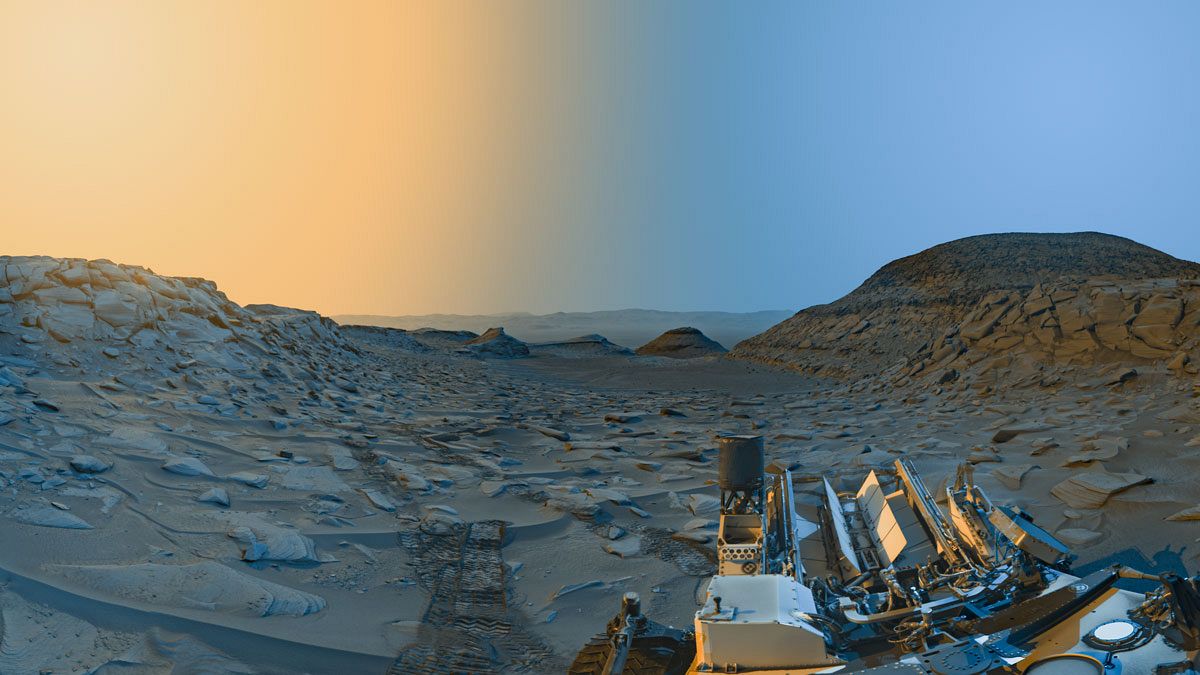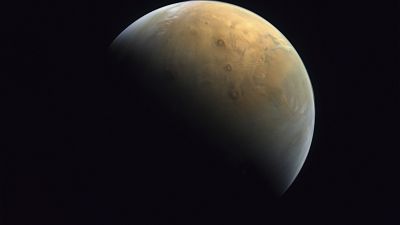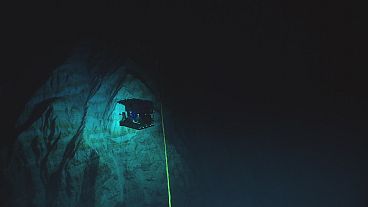Scientists say their new method could be "revolutionary" in determining whether samples contain evidence of extraterrestrial life.
Artificial intelligence (AI) is being put to countless uses these days - and soon it might also be used for finding evidence of life on other planets.
Scientists from the Carnegie Institution for Science in Washington DC, the US, and other research centres have hailed what they are calling the "holy grail of astrobiology," which is a method to test for evidence of past or present life.
They claim their test, which uses AI-based methods, has 90 per cent accuracy in distinguishing past and present samples of life from abiotic samples, and it could be put to use to look at samples collected from other planets.
A team of scientists led by Robert Hazen from Carnegie and Jim Cleaves of the Tokyo Institute of Technology (Tokyo Tech) have revealed their method for differentiating biotic (relating to living organisms) from abiotic (sterile) samples.
They do this with gas chromatography analysis, which separates and identifies a sample’s component parts.
This is followed by mass spectrometry, which determines the molecular weights of those components. By using data from the molecular analysis of 134 known abiotic or biotic carbon-rich samples, an AI was trained to predict a new sample’s origin.
Testing with 90% accuracy
The researchers found it had 90 per cent accuracy, successfully identifying samples from living things such as shells, teeth, bones, insects and leaves, things related to ancient life, such as coal, oil and amber, and samples unrelated to biological life such as pure laboratory chemicals.
Publishing their findings in the journal Proceedings of the National Academy of Sciences, they say their test is a "simple and reliable test for signs of past or present life on other planets".
"This routine analytical method has the potential to revolutionise the search for extraterrestrial life and deepen our understanding of both the origin and chemistry of the earliest life on Earth," Hazen said.
A number of countries and space agencies have planned missions to Mars, with the aim of collecting and returning samples back to Earth.
The most notable of these is the Mars Sample Return Mission, a joint venture between NASA and the European Space Agency (ESA).
Hazen said that the new method for finding evidence of life could be included on robotic spacecraft “to search for signs of life before returning samples to Earth".
"We began with the idea that the chemistry of life differs fundamentally from that of the inanimate world; that there are ‘chemical rules of life’ that influence the diversity and distribution of biomolecules," Hazen said.
"If we could deduce those rules, we can use them to guide our efforts to model life’s origins or to detect subtle signs of life on other worlds".
"The search for extraterrestrial life remains one of the most tantalising endeavours in modern science," added Cleaves, a lead author of the study.
Testing on ancient samples
"The implications of this new research are many, but there are three big takeaways: First, at some deep level, biochemistry differs from abiotic organic chemistry; second, we can look at Mars and ancient Earth samples to tell if they were once alive; and third, it is likely this new method could distinguish alternative biospheres from those of Earth, with significant implications for future astrobiology missions".
The technique could also be used to settle debates over the origin of a number of samples found on planet Earth.
There are a number of ancient samples that scientists have struggled to determine the origin of because collections of organic molecules - whether biotic or abiotic - degrade over time.
The researchers say in spite of this degradation, the new method is capable of detecting signs of biology - in some instances, in samples hundreds of millions of years old.
It could soon be used to resolve some scientific mysteries, including the origin of 3.5 billion-year-old sediments found in Western Australia that are the subject of debate as to whether or not they contain signs of life.
"We’re applying our methods right now to address these long-standing questions about the biogenicity of the organic material in these rocks," Hazen said.
The researchers add that the approach could be used in fields such as biology, palaeontology, and archaeology.



